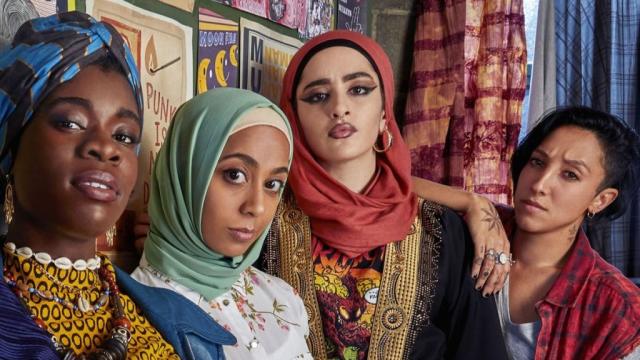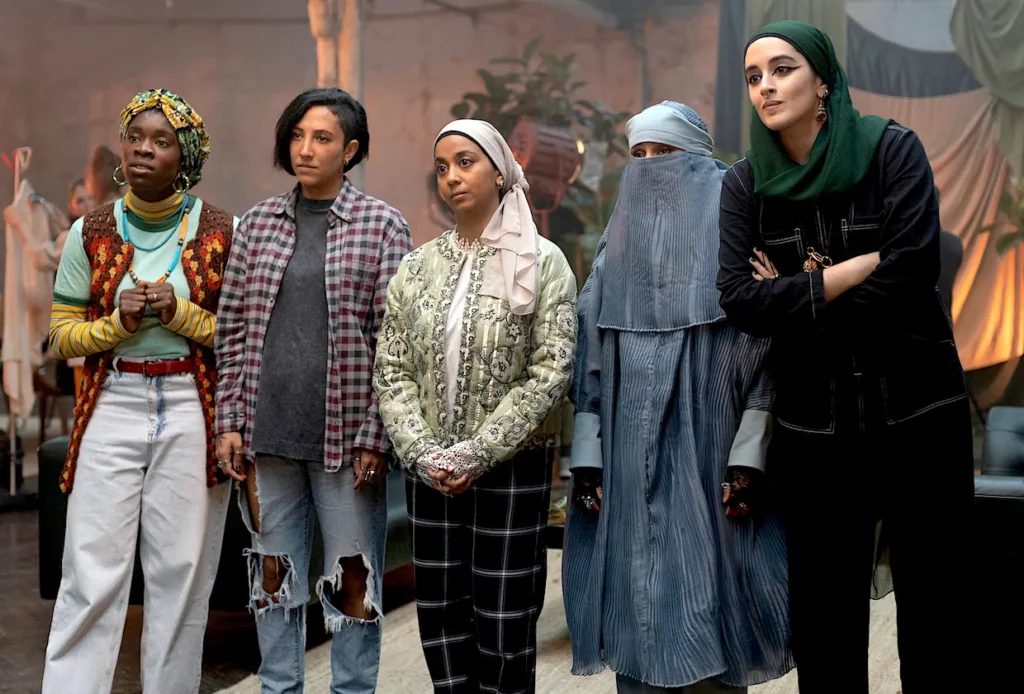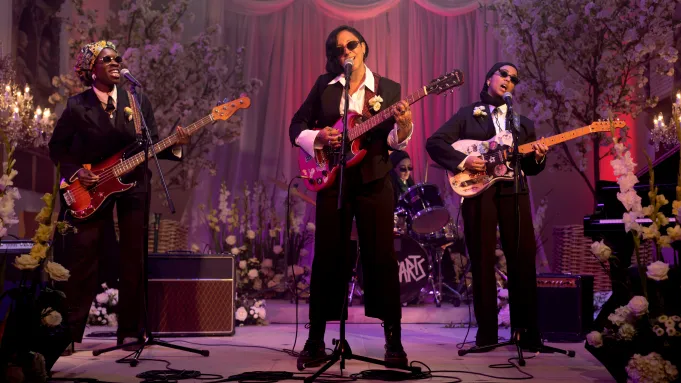In the second season of “We Are Lady Parts,” the punk band’s journey deepens as the five Muslim women’s personal growth and musical evolution come to light. With songs like “Glass Ceiling Feeling,” which are truly funny, the series keeps up its excellent songwriting.
The band members’ ability to strike a balance between their personal lives and their goal of becoming successful musicians promotes a sense of community and empowerment. Now that the second season of “We Are Lady Parts” is out, let’s see if it’s worth a watch.

The Band’s Quest for a Debut Album in We Are Lady Parts
As Saira, Amina, Ayesha, and Bisma begin the process of producing their debut album, “We Are Lady Parts” season 2 goes deeper into their lives. Even though they are becoming more and more well-known, their dream is in jeopardy since they cannot afford to pay for studio time. The series stands out for its portrayal of five female Muslim leads with rich, multi-dimensional characters.

Their narratives transcend stereotypes while embracing uniqueness, weaving themes of sisterhood, music, and cultural exploration into a tapestry. The band must decide whether to follow chances that could jeopardize their artistic integrity or remain loyal to their manager Momtaz.
This decision raises bigger questions about corporate influence vs cultural authenticity. The women Amina, Saira, Bisma, Ayesha, and Momtaz struggle with the morality and complexity of success in a field that frequently marginalizes Muslim women.
The suspense in “We Are Lady Parts” Season 2 increases as the band strikes a careful balance between being authentic to themselves and remaining commercially viable. With just six episodes, “We Are Lady Parts” season 2 might seem a little short, but creator Nida Manzoor accomplishes a lot with little space. Even though the episodes are short, each character has a unique story arc that explores themes of identity and self-discovery.
Cultural Representation
“We Are Lady Parts” captures the essence of empowerment as the characters navigate through moments of anger, frustration, and introspection. Whether battling personal concerns, cultural expectations, or artistic goals, the band members meet obstacles head-on, demonstrating their dedication and will to forge their paths.
One notable aspect that could have been further explored is Saira’s housing situation, which remains unresolved by the season’s end. Though the season is brief, it leaves room for speculation and anticipation, which heightens expectations for a possible third season that would handle unresolved issues and go deeper into the band’s journey.

“We Are Lady Parts” offers an elaborate examination of artistic expression and personal identity. The show offers a fair depiction of the conflicts that arise between artistic integrity and commercial success as the band members struggle to write music that truly represents their lives. By portraying the many experiences of Muslim women from different ethnic backgrounds, the series upholds its realism while providing a welcome and much-needed representation in mainstream media.
Much like an unforgettable concert, it leaves a lasting impression, delivering a powerful and entertaining experience that resonates with its audience. “We Are Lady Parts” season 2 promises even more delights with its captivating story and relatable characters, making us want to see what adventures and plans the band will go on.
Also Read: Geek Girl Review: Netflix’s Perfect Recipe for All Things Amusing
Conclusion
“We Are Lady Parts” season 2 continues to impress with its authentic portrayal of the band’s journey, blending humour, music, and cultural exploration. The series delves into the complexities of balancing personal integrity with commercial aspirations, highlighting the diverse experiences of Muslim women.
Despite its short run, the season effectively captures each character’s growth and struggles, leaving audiences eagerly anticipating future developments. With its rich storytelling and relatable characters, “We Are Lady Parts” remains a standout, offering a refreshing and empowering narrative that celebrates individuality and artistic expression.